Parkinson’s WoQ-19 Survey Application
A team of UBC researchers from the Pacific Parkinson’s Research Centre is conducting research to provide Parkinson’s patients with a personalized and optimized medication plan to improve their quality of life. The UBC CIC worked with the researchers to develop a survey app. The data collected on the app can be combined with information gathered using wearable sensors for advanced analysis to estimate the timing of future dosages.
Currently, Parkinson’s patients manage their symptoms by taking medication at regular intervals, every few hours. The researchers want to collect data on medication wearing-off periods to better predict when a person may feel unwell so they can recommend a personalized medication plan that will minimize patient suffering. Data on wearing-off periods will be gathered by the researchers using the Parkinson’s survey application that records a patient’s symptoms and medication time, correlated with data collected simultaneously using a wearable Empatica biometric sensor.
Approach
To tackle the challenge of collecting data to predict wearing-off periods of Parkinson’s Disease medication, the UBC CIC developed a solution to collect data in an iOS app. The solution is a Survey Application that can alert participants periodically (between 30-minute to 3-hour intervals) to fill out a QoL survey related to their symptoms. Using the application, participants can also submit the time that they took their Parkinson’s medication.
Advantages for Parkinson’s Patients
The project’s prototype offers several potential advantages for Parkinson’s patients. Expand on the three categories below to learn more.
Personalized Medication Timing
The main advantage is providing Parkinson’s patients with personalized information on when to take their medication. This can lead to better symptom management and improved quality of life. By understanding the specific patterns of medication wearing-off periods for each patient, the advanced analysis conducted by the Parkinson’s researchers using data collected from the app can suggest optimal times for medication, reducing periods of discomfort and minimizing suffering.
Reduced Symptom Fluctuations
Parkinson’s disease is characterized by fluctuating symptoms, where patients may experience periods of improved mobility followed by periods of decreased mobility. By predicting and addressing these medication wearing-off periods, the project’s Sponsor could use the app to support their aim of reducing symptom fluctuations.
Patients’ Quality of Life
The goal of the project is to develop a prototype that can be used as a first step to address improving the quality of life for Parkinson’s patients by minimizing medication-related discomfort and optimizing symptom management. The project Sponsor believes it can have a significant positive impact on the daily lives of individuals living with Parkinson’s disease and their caregivers.
Supporting Artifacts
Architecture Diagram

Demo Video
Screenshots of UI
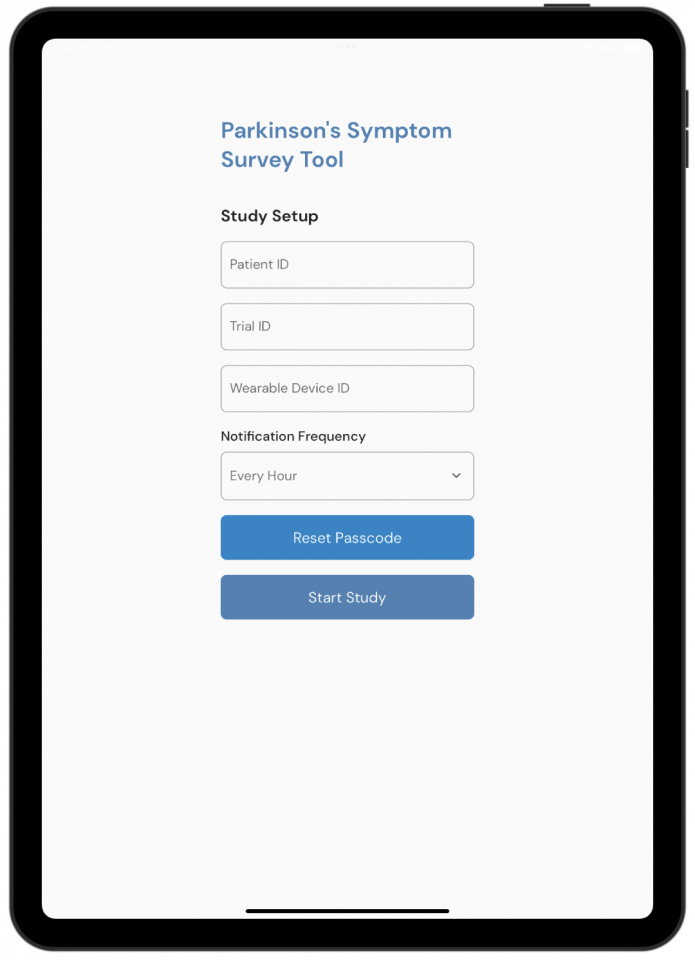
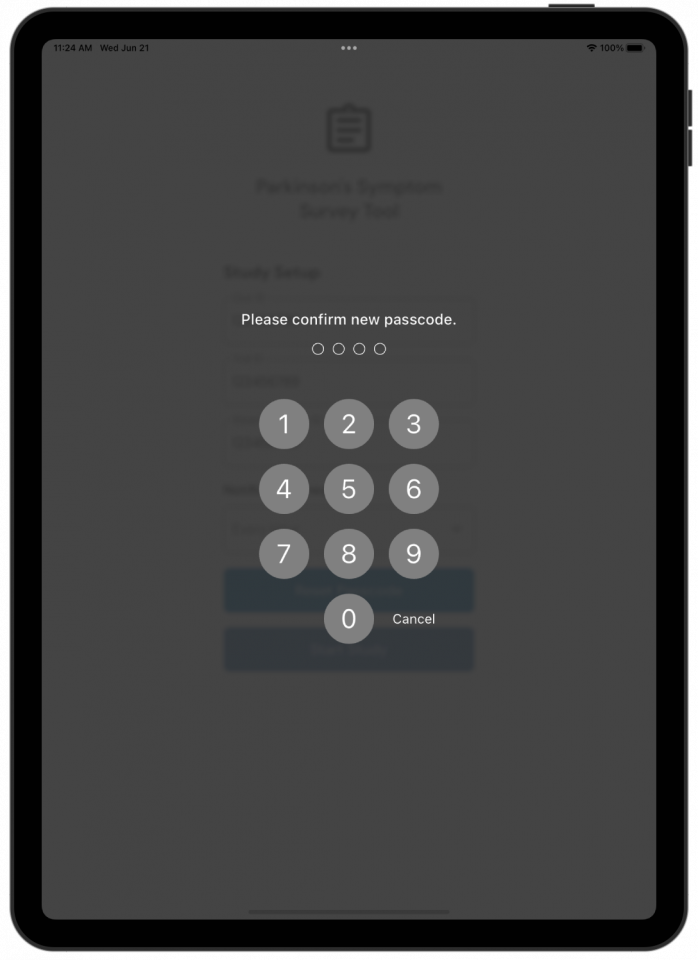
Study Setup Page
Passcode Reset Page
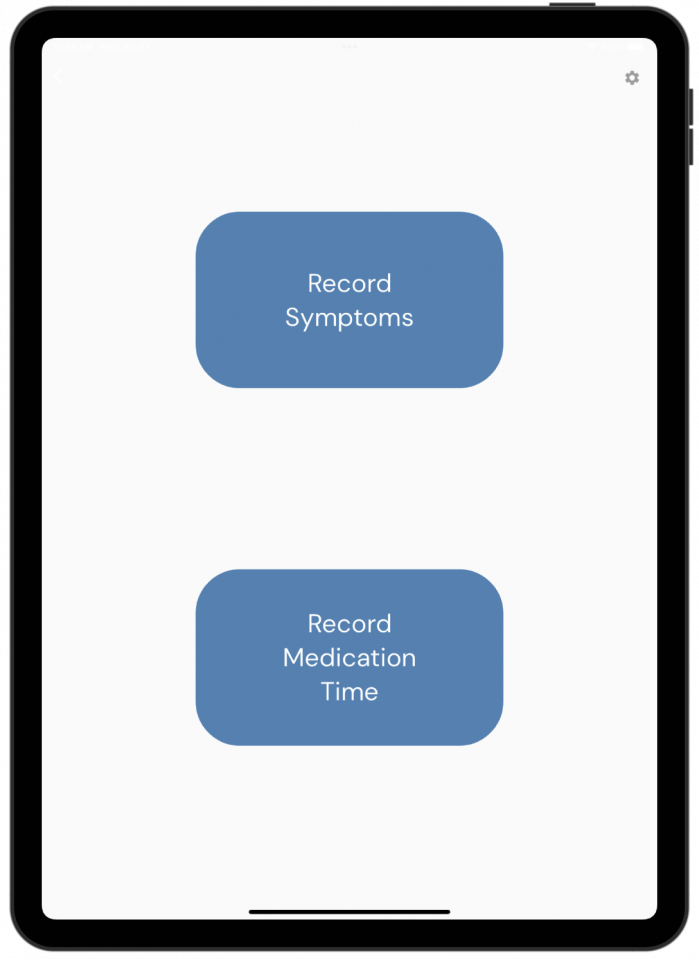
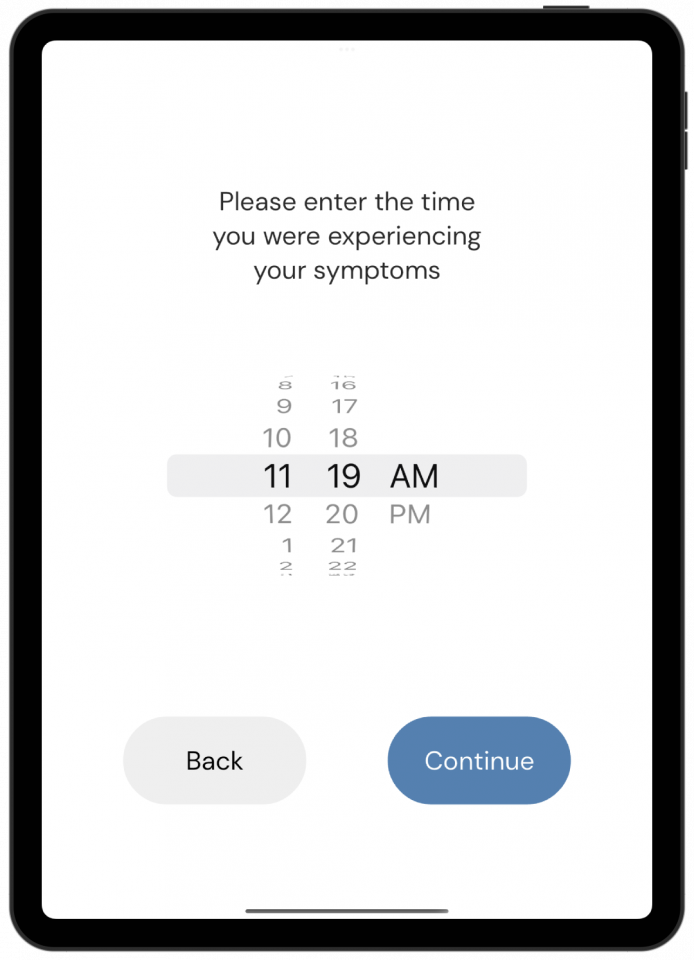
Patient Home Page
Time Picking Page for Previously Experienced Symptoms
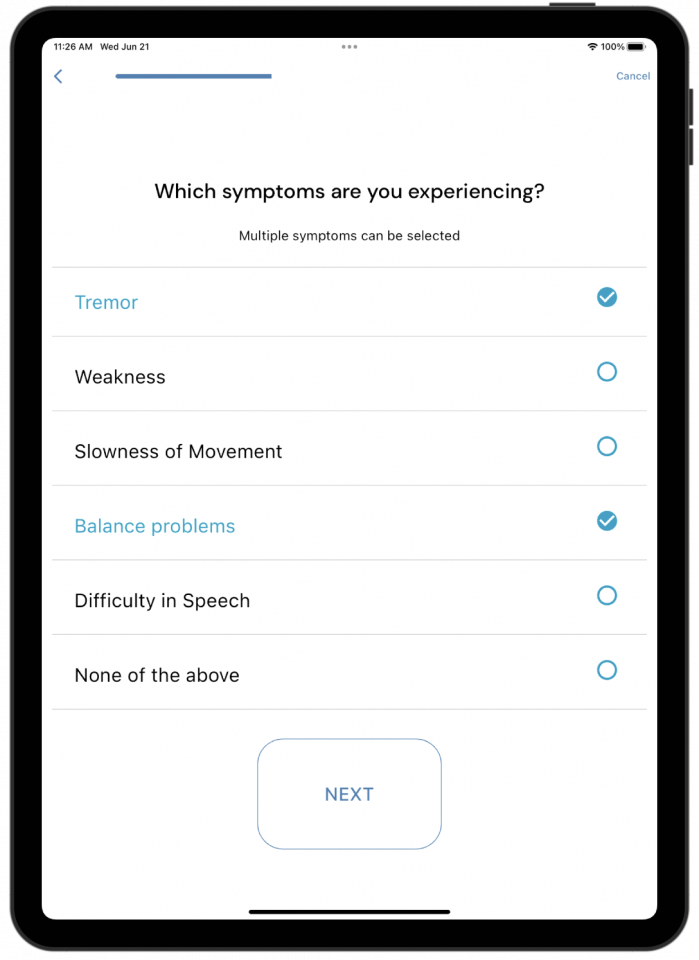
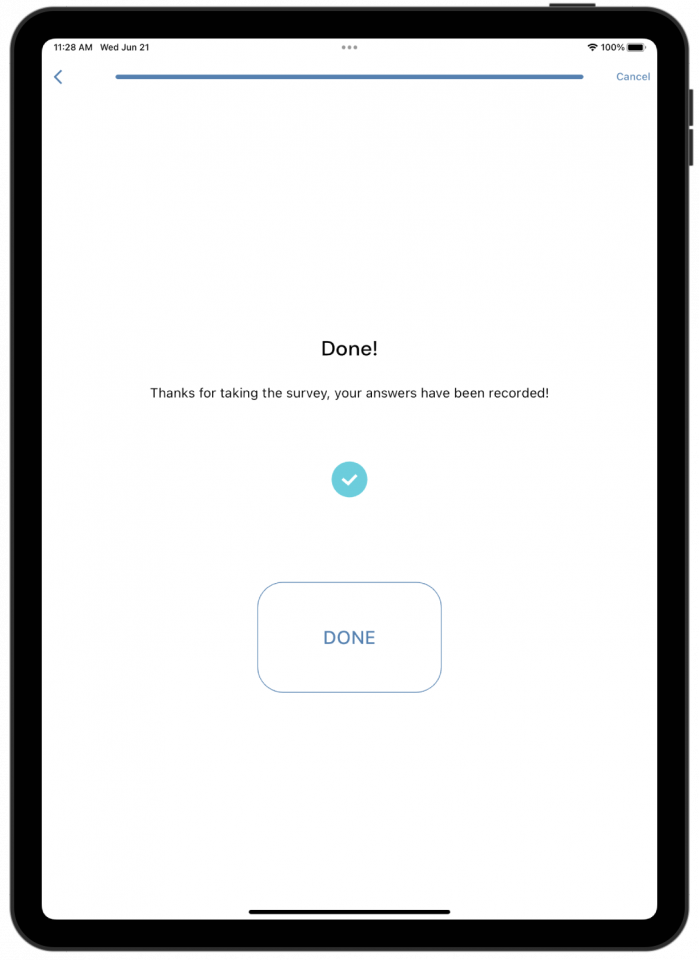
Survey Page
Survey Complete Page
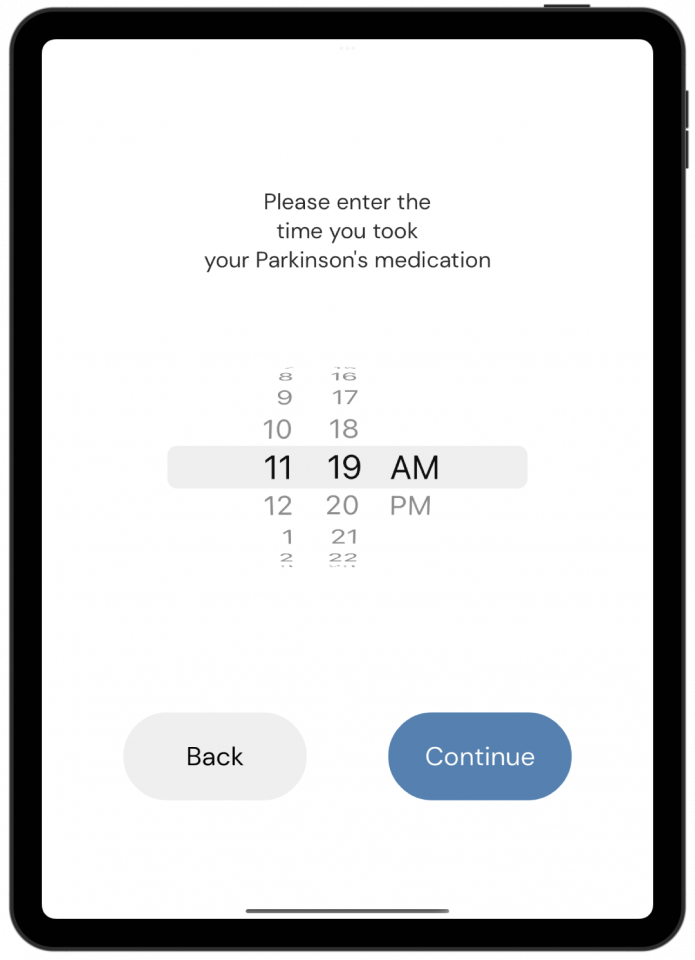
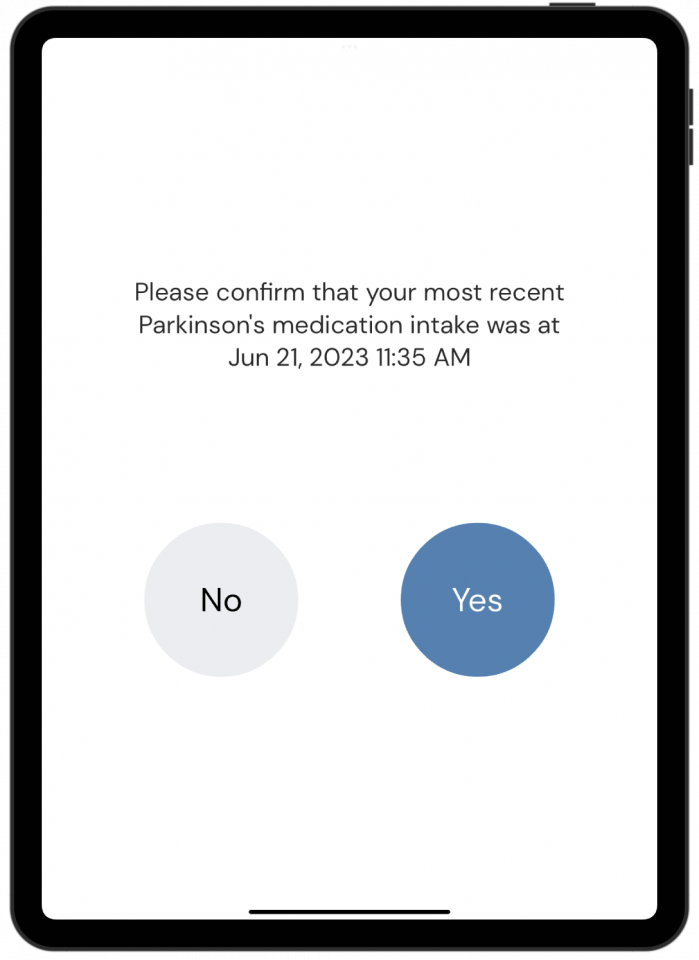
Time Picking Page of a Previous Medication Intake
Record Medication Time Confirmation Page
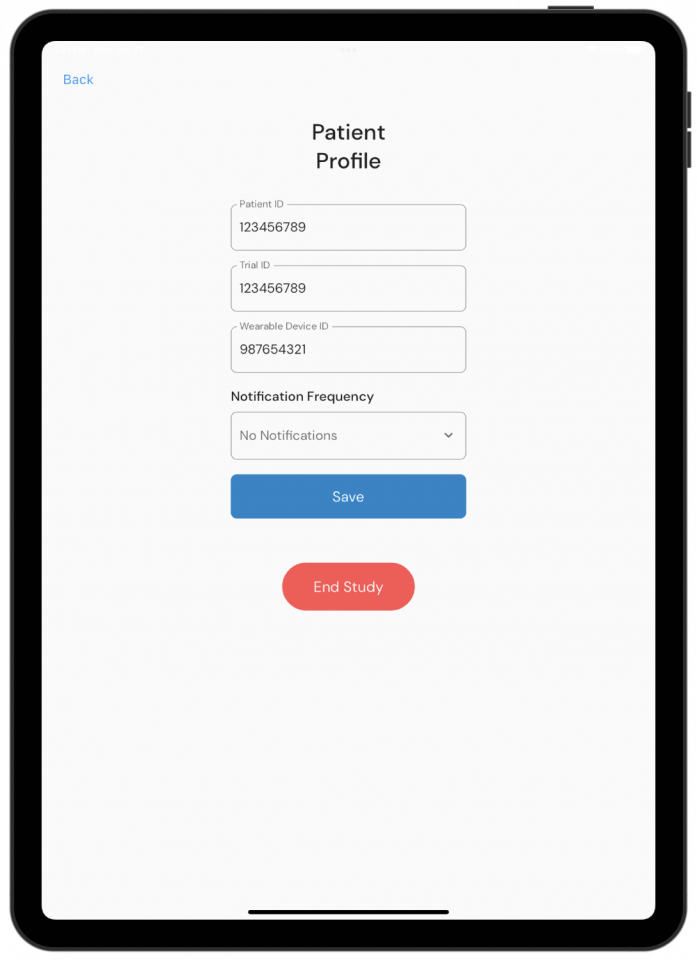
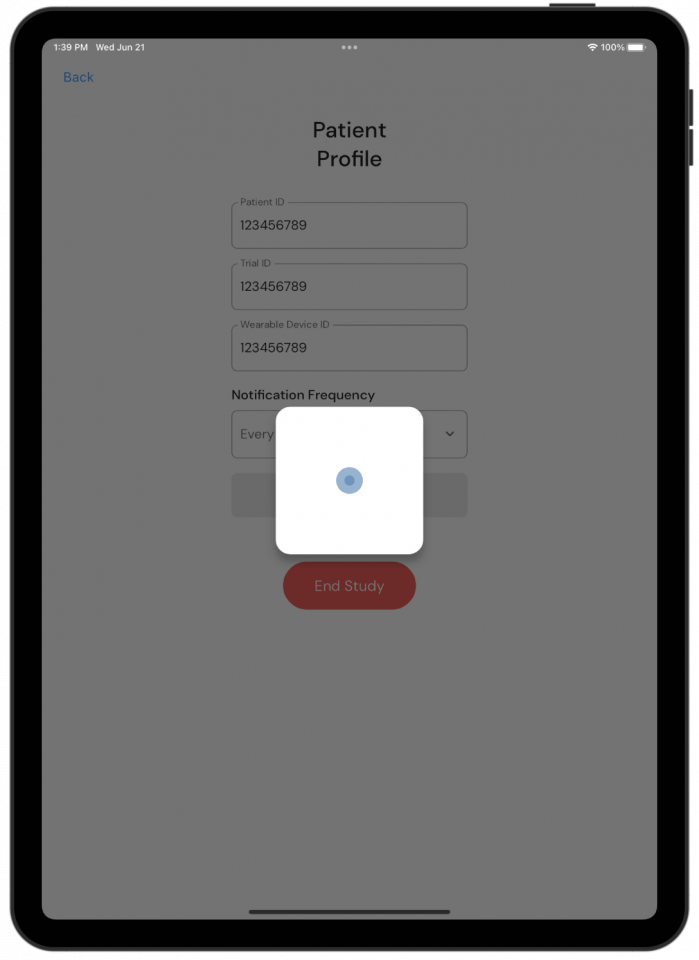
Admin Page to edit stored IDs, change the notification frequency, or end the study
Uploading in progress page
Technical Details
This solution involves two major components: (i) mobile application, and (ii) AWS cloud storage. These two components work together to deliver the developed solution. The Application Flow describes the process of setting up a study and recording symptom and medication data. The Data Input Flow describes the process of uploading and storing data in the cloud.
Application Flow
Administrators enter the Patient ID, Trial ID, Device ID, and notification frequency at the start of every study in the setup page. If needed, administrators can also use the setup page to reset the passcode to unlock the admin page once the study has begun. These settings are stored locally on the device. Once a study is started in the app, participants or patient users will record responses to symptom surveys and submit timestamps for when they have taken medication. Every time a survey is completed or a medication time is recorded, results are stored locally to the device.
Data Input Flow
When the administrator selects “End Study” from the admin page at the end of a patient study, the app prepares a JSON file composed of all the survey results and medication times. The app then makes a POST request to an API Gateway with an API Key stored on the app. The API Gateway calls a Lambda function which then returns a pre-signed URL to the app. The JSON file is then sent to a raw data S3 bucket through a PUT request to the pre-signed URL. The delivery of JSON files to the raw data S3 bucket triggers a Lambda function, which receives the event information, gets the corresponding JSON file from the raw data bucket. The Lambda function code will separate the JSON data into separate survey files and a summary file and upload them into the processed data S3 bucket. The Lambda function will then convert the JSON data into a surveys CSV file which contains all the results from the symptom surveys, and a medications CSV file, which contains all the times the research participant/patient has taken medication.
Link to mobile application solution on GitHub: https://github.com/UBC-CIC/parkinsons-survey-app
Link to cloud storage solution on GitHub: https://github.com/UBC-CIC/parkinsons-backend
Acknowledgements
Research team from the UBC Pacific Parkinson’s Research Centre
Photo by: Getty Images on Unsplash
About the University of British Columbia Cloud Innovation Centre (UBC CIC)
The UBC CIC is a public-private collaboration between UBC and Amazon. A CIC identifies digital transformation challenges, the problems or opportunities that matter to the community, and provides subject matter expertise and CIC leadership.
Using Amazon’s innovation methodology, dedicated UBC and Amazon CIC staff work with students, staff and faculty, as well as community, government or not-for-profit organizations to define challenges, to engage with subject matter experts, to identify a solution, and to build a Proof of Concept (PoC). Through co-op and work-integrated learning, students also have an opportunity to learn new skills which they will later be able to apply in the workforce.

